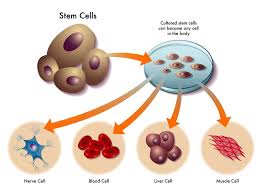Stem Cell Therapies for Low Back Pain:
What does this mean?

Low back pain (LBP) is the main cause of disability in people under the age of 50. 15% of the US population is estimated to seek care for LBP annually. The risk of having LBP is higher in people who are obese, smokers, have somatization disorders, medicolegal claims, and anxiety or depression.
Most patients don’t understand that LBP comes in many shapes and sizes. True LBP comes from the disc, the facet joints, pinched nerves or spinal muscles & tendons. Non-specific LBP originates from another location (sacro-iliac joints, hips, internal organs). It has been estimated that non-specific LBP may be responsible for over 80% of LBP. Understanding where your pain is coming from can help determine your treatment options.
Oftentimes, when I speak with patients, we discuss options for LBP whether it’s continuing CONSERVATIVE MANAGEMENT (physical therapy, activity modification, living with the symptoms) vs SURGERY. I often need to explain to patients that LBP is oftentimes difficult to know exactly where the pain is coming from and our long-term goal is to control the symptoms and learn to live with an aging spine. Cure is not an option.
What about Stem Cell Therapy (SCT)?
To understand these treatments one first needs to understand the degenerative process. The spinal disc environment is harsh and unforgiving. Not many cells live in the disc and the biomechanical stresses are high with associated poor blood supply and an acidic environment with high osmotic pressure. Not many cell types can tolerate that environment! This environmental combination leads to a degenerative process that can start as soon as the teenage years. Cells die and the disc is unable to heal itself.
Stem cells are baby cells that are unsure of what they want to be when they grow up (undifferentiated). These cells can heal themselves (renew) and become other types of cells (differentiate). In theory, I can place one of these stem cells into the disc and the cell transforms into a functioning disc cell. The hope is that these new disc cells slow down the aging process or potentially reverse the process.
Where to find Stem Cells?
Stem cells can come from embryos (Embryonic Stem Cells or ESCs) or from tissue in the human body that produces “baby cells.” These tissues include bone marrow, fat tissue, and the human umbilical cord. Obviously, ESCs have significant legal and ethical issues that makes access to these types of cells difficult. Human Mesenchymal Stem Cells (MSCs) are the most easily obtained and the bone marrow is the easiest site to get the material with the least amount of soft tissue injury. Typically, a needle is used to gain access to the pelvis and the marrow is sucked out as bone marrow aspirate or BMA.

One big question that currently has no answer; how much SCT is needed to have an effect? Does the amount of material needed vary for a cervical disc vs a lumbar disc vs another site?
In animal models, SCT has been shown to increase disc height, improve MRI signal of the disc, and decrease microscopic degeneration. The problem is, humans are much different than mice or pigs. What works in an animal is not a guarantee that it will work in a human or at what specific SCT concentration.
Has SCT been studied in humans?
There is a growing base of clinical studies that have looked at SCT in humans. These studies look promising. The big issue with these studies is that they are not similar and mix many types of patients. Some studies include specific LBP with non-specific LBP. Others have low numbers (less than 10 patients) while other studies utilize different mixtures of stem cells and others do not have a control group or have a significant risk of bias (researcher is paid by the company).
In addition, the potential for profit has caused some companies to overestimate the effect of their stem cell product. THERE ARE NO PRODUCTS THAT ARE FDA APPROVED TO REGENERATE SPINAL DISCAL TISSUE.
To conclude, while SCT has promise, before it can be used in the mainstream the process needs to be standardized and monitored to ensure safety and prevent abuse. The current clinical evidence is weak and future studies need to prove consistently that the SCT works over and above placebo with little to no complications. Until this occurs, beware of snake-oil websites promising a cure for LBP.
